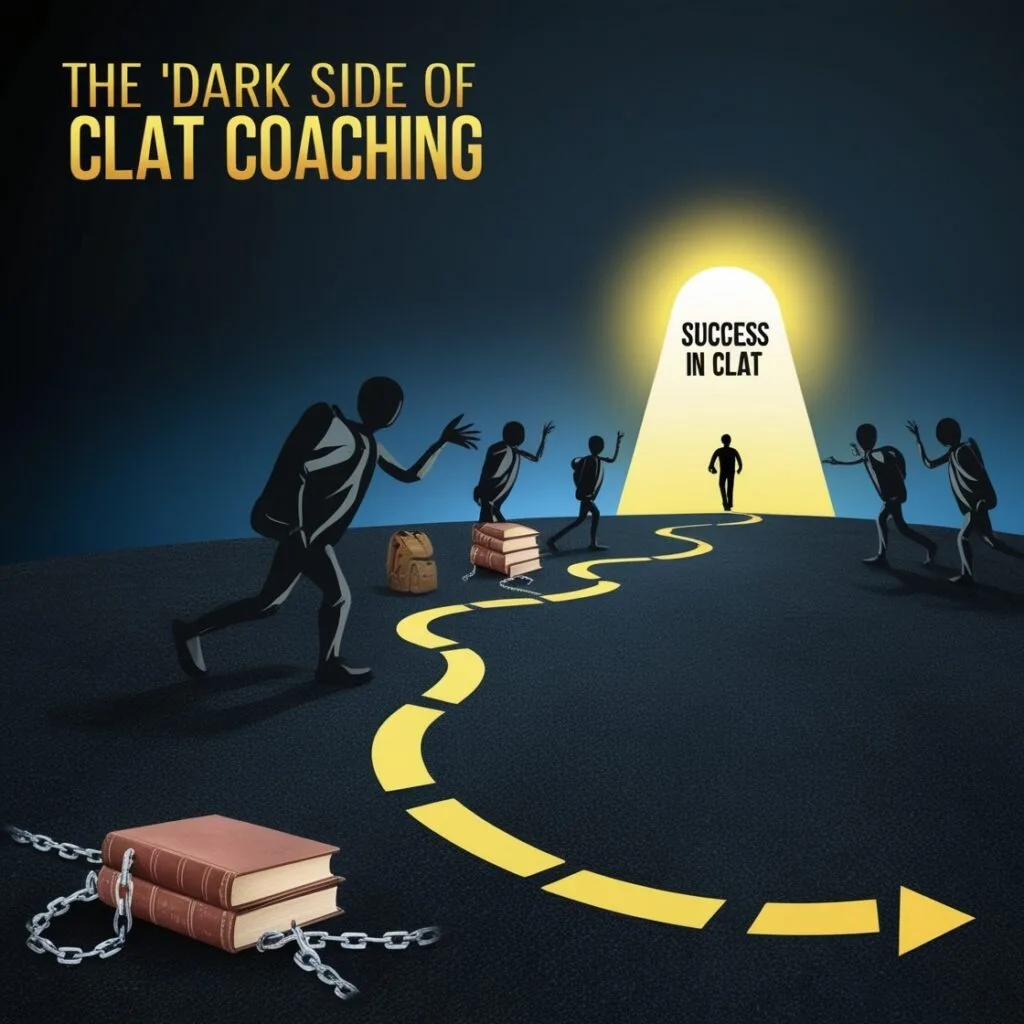The Common Law Admission Test (CLAT) is a significant milestone for students aspiring to enter prestigious law schools in India. In an attempt to crack this competitive exam, many students turn to coaching centers for guidance. However, the challenges of CLAT coaching can often outweigh the perceived benefits. This article will dive deep into the hidden costs, stress factors, and questionable teaching methodologies, providing a balanced view of this widely accepted form of preparation.
1. Financial Strain Due to Hidden Costs
At first glance, coaching institutes for CLAT preparation seem to offer structured courses at a reasonable price. However, one of the most significant challenges of CLAT coaching is the hidden costs associated with it. These may include:
- Additional fees for mock tests and practice materials
- Costs related to extra or specialized classes outside of regular coaching hours
- Travel expenses for students commuting to coaching centers
- For students from out of town, accommodation expenses add further strain
Even after covering tuition fees, students frequently encounter other financial burdens. These hidden costs place extra pressure on students, especially those from financially constrained backgrounds. As a result, they might find themselves more focused on managing expenses than on exam preparation.

2. The Mental Toll: Stress and Anxiety
Another undeniable challenge of CLAT coaching is the stress and anxiety that students often face. The high expectations from coaching institutes, paired with the competitive nature of their peers, can lead to burnout. Consequently, students who once approached their studies with enthusiasm may begin to experience:
- Intense pressure to keep up with fast-paced curricula
- Mental exhaustion from long study hours and heavy workloads
- Feelings of inadequacy when compared to peers who may perform better
Coaching centers are designed to cater to a large number of students, and as a result, they sometimes fail to focus on an individual’s mental well-being. This competitive environment, if not managed well, can exacerbate students’ stress levels, making the challenges of CLAT coaching emotionally taxing.
3. One-Size-Fits-All Approach to Teaching
The third major challenge of CLAT coaching lies in its teaching methods. Despite charging high fees, many coaching centers fail to offer customized learning experiences tailored to individual students’ needs. The teaching style in most institutes follows a one-size-fits-all approach, leaving out students who may require more attention or a different pace.
Key issues with the teaching approach include:
- Over-reliance on rote memorization instead of conceptual clarity
- Inadequate focus on improving problem-solving skills, which are crucial for competitive exams like CLAT
- Lack of personalized feedback due to large student batches
This inefficient method of teaching can prevent students from mastering key concepts, which ultimately impacts their ability to perform well in the exam. Therefore, many students find themselves merely cramming information without truly understanding the material.
4. Poor Time Management
While coaching centers promise a structured timetable, managing time effectively remains a significant challenge for many students. The packed schedule of classes, combined with additional self-study time, often leads to fatigue and inefficiency. As a result, students might find themselves overburdened, leading to poor retention of key concepts.
Moreover, the strict timetables and frequent mock tests may not always leave room for thorough revision, which is essential for long-term memory retention. Thus, instead of empowering students to excel, the rigid timelines can sometimes become counterproductive.
5. Lack of Individual Attention
With large class sizes, another significant challenge of CLAT coaching is the lack of personalized attention. Unlike school teachers, who can closely monitor their students, CLAT coaching instructors often deal with hundreds of students at a time. This means that weaker students might not get the support they need, and their doubts may go unresolved.
Furthermore, some coaching centers tend to focus on their top-performing students, offering them additional resources and attention while leaving average students behind. Consequently, this lack of individualized attention can severely affect a student’s confidence and preparation.
6. Better Alternatives to CLAT Coaching
Considering the mounting challenges of CLAT coaching, it’s essential to explore alternative methods that can help students prepare effectively without the financial or emotional burden. Some of these alternatives include:
- Online courses: Online coaching platforms provide structured learning materials and video lessons that students can access at their own pace. These platforms often cost less than traditional coaching institutes.
- Self-study: Many students find success by following a disciplined self-study plan using resources like standard CLAT preparation books and mock tests available online.
- Mentorship programs: Students can seek out mentorship from previous CLAT toppers or professionals in the legal field for personalized guidance.
These alternative methods can provide more flexibility, lower costs, and less pressure compared to traditional coaching centers, helping students overcome the challenges of CLAT coaching more effectively.

Conclusion: Weighing the Pros and Cons
In conclusion, while coaching centers offer structured preparation, the challenges of CLAT coaching are significant and worth considering. From hidden costs to mental stress and ineffective teaching methods, students must carefully evaluate their options before investing time and money into a coaching institute. Ultimately, exploring alternatives like online courses, self-study, or mentorship programs could lead to better results and a more positive preparation experience.







